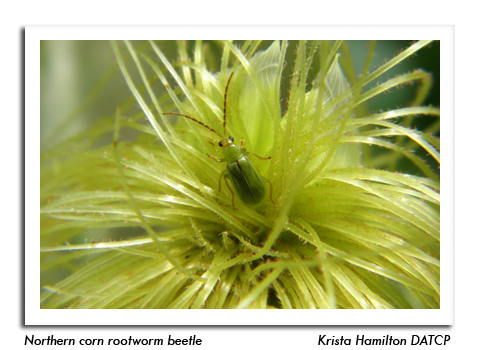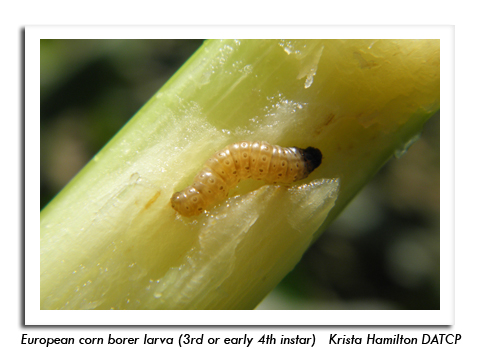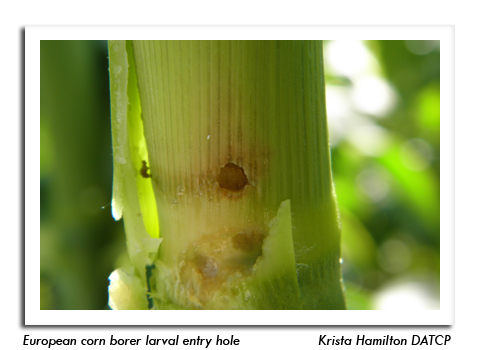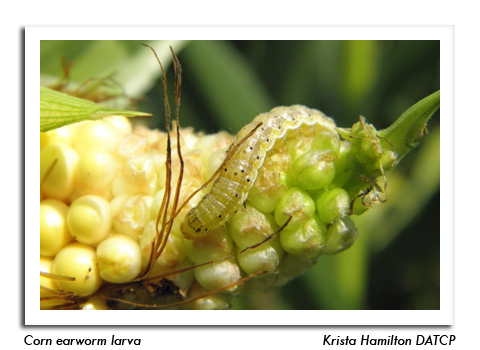
 |
|
|
Looking Ahead
Volume 59 Number 16 Date 08/21/2014 WESTERN BEAN CUTWORM - Moth numbers have decreased to very low levels, signaling the end of the adult flight. The cumulative state count as of August 20 is 502 moths in 103 pheromone traps. Individual counts from the 2014 trapping survey are provided in the map in the CORN section. Monitoring network participants may remove their traps at this time. CORN ROOTWORM - Preliminary results of the annual beetle survey show a pronounced population increase in western Wisconsin and a decrease in beetle abundance in the central and eastern areas. District averages thus far range from 0.1 beetle per plant in the northeast region to 0.9 per plant in the southwest. The state average in 179 fields surveyed as of August 20 is 0.5 beetle per plant. A count of 0.75 or more beetles per plant in continuous corn indicates a heightened risk of root damage to non-Bt corn in 2015. EUROPEAN CORN BORER - The treatment window for second generation larvae is expected to close in the next few days in southwest, south-central and west-central Wisconsin. Management decisions must be made very soon, before the caterpillars have bored into corn stalks and ears. STRAWBERRY ROOT WEEVIL - Large numbers of these black beetles are reportedly entering homes in scattered locations in southern and western Wisconsin. Although they are considered a nuisance by homeowners, the weevils are not damaging to the structure and do not breed indoors. CORN EARWORM - Migrants have not yet arrived in significant numbers. The highest count reported since monitoring began last month was only 15 moths in Dodge County during the week of July 17-23. Counts in August have been less than eight moths per trap per week. The cumulative seasonal capture of only 233 moths in 15 traps indicates the late summer migration has been too minor to produce substantial larval infestations, although this could change if a major influx were to occur by early September. -- Krista Hamilton, DATCP Entomologist 





|
|
|